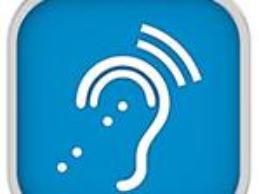From the desk of Teresa Goddard, M.S., Lead Consultant – Assistive Technology Services
JAN has been getting quite a few questions about hearing and accessibility of telephone calls, conference calls, and video conferencing. As a result of increased reliance on telework and telehealth services. Many workplaces have experienced communication challenges while making a rapid transition to telework. Supporting employees who are deaf or hard of hearing and who are working remotely, may require planning and adjustments to accommodations so that services such as CART, captioning, and interpreting can be provided effectively.
Consumers, students, and patients who are deaf or hard of hearing may benefit from similar accommodation approaches. Remember, when choosing a telehealth delivery method, it may be necessary to check the professional or ethical standards for the provider’s professional organization and rules and guidelines provided by health insurance companies, as well as governmental guidelines. Also be sure to use auxiliary aids and services that will be effective in meeting the needs of the patient and/or their medical provider with hearing related needs.
Conference calls/video chatting with CART/Captioning support:
Currently, there is no automated captioning for telephones as far as we are aware here at JAN. If video calls could be substituted for phone calls, a form of automated captioning may be an option for meetings via Skype/Teams.
- Captioned telephone calls: https://askjan.org/solutions/Captioned-Telephone-Calls.cfm
- Captions for videos: https://support.office.com/en-us/article/Microsoft-Stream-automatically-creates-closed-captions-for-videos-8d6ac353-9ff2-4e2b-bca1-329499455308
Remote CART is an option that is typically explored when other captioning options are not meeting an employee's needs during conference calls, video conferences, and webinars. The captions may be delivered to a caption pod or through a link in a second window or on a second device. A similar option that is sometimes provided in-house is ASR/ Voice Shadowing/Voicewriting.
- Remote CART services: https://askjan.org/solutions/CART-Services-Remote.cfm
- ASR/Voice Shadowing/Voicewriting: https://askjan.org/solutions/ASR-Voice-Shadowing-Voicewriting.cfm
For those using ZOOM, the following information is from the ZOOM FAQ :
What 3rd party caption providers are supported by Zoom? CART providers use many different platforms depending on the needs of their clients. Support for integrated captions within Zoom can be accomplished as long as the CART provider is able to use a captioning platform that supports Zoom's Closed Caption REST API. VITAC is a CART provider that supports Zoom's Closed Captioning API. StreamText and 1CappApp are captioning platforms that also support Zoom's Closed Captioning API.
- Example of a Zoom compatible captioning/CART provider: https://www.vitac.com/services/live-captioning/
Conference calls/video chatting with interpreter support:
Video Relay Services (VRS) may be an option for interpreter support during telehealth conversations. In principle, videoconferencing with interpreter support is much like conferencing in any other third person over video, except that the third person is an interpreter.
- Making a group call: https://support.skype.com/en/faq/fa10613/how-do-i-make-a-call-on-skype
- Video remote interpreting or VRI: https://askjan.org/solutions/Video-Remote-Interpreting-Services-VRI.cfm
VRI is typically used for in person conversations and meetings during which an in-person interpreter is unavailable or impractical. The interpreter conferences in via video. This type of interpreting may potentially also be used for video conferences, if the provider is able to use the desired videoconferencing platform. This approach could also be used for meetings that involve a conference call, but during which the employee who is deaf is in the room, rather than calling in remotely.
- How to locate an interpreter and agencies offering nationwide interpreting services: https://askjan.org/solutions/Interpreter.cfm
- Vineya is an example of a service providing a way to streamline the process of scheduling interpreter services.
Also, availability of Personal Protective Equipment (PPE) for interpreters has been a growing concern particularly in healthcare settings and for interpreters serving consumers who are deaf-blind. PPE may be needed for interpreters when the interpreter is physically present in a hospital or medical provider’s office, or when physically present in the same space as a patient whose needs require use of PPE. Typical masks obscure the mouth, inhibiting clear communication with patients who are deaf or hard of hearing. There is a facemask with a clear window to help with lip reading, but it is in limited supply.
As always, when choosing an accommodation approach keep your focus on effectiveness. And remember that JAN is always here to discuss any questions or concerns!


